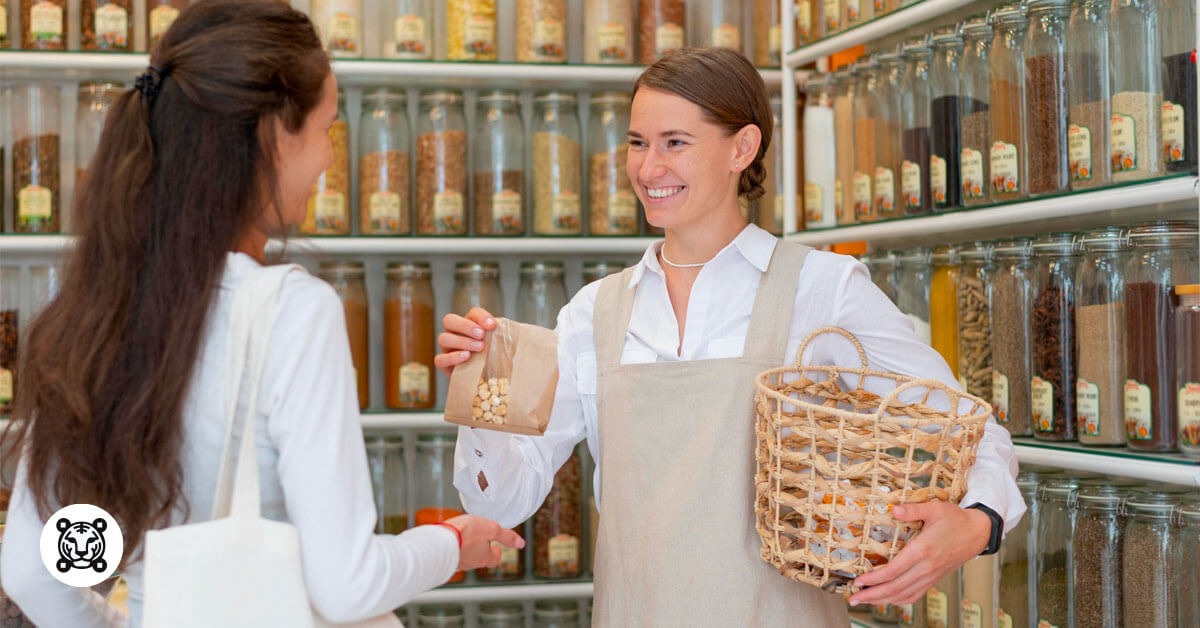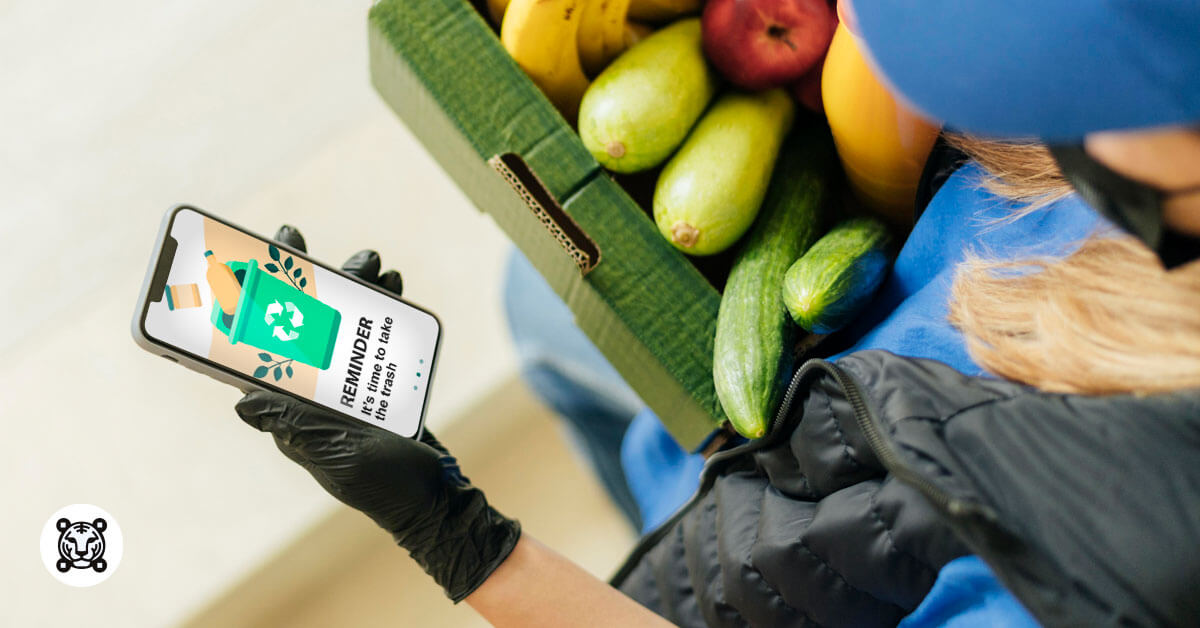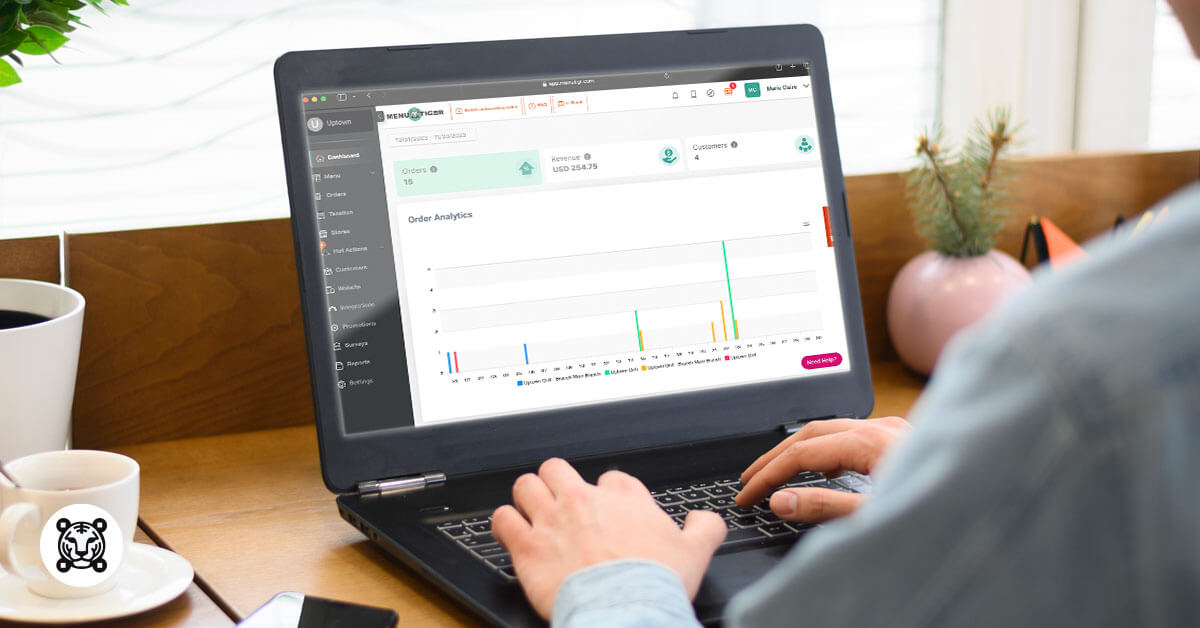
9 Tips for Reducing Food Waste in Restaurants
Last Updated: March 14, 2025
Behind the vibrant scenes of bustling kitchens and exquisitely crafted dishes lies an unsettling truth—a significant portion of food waste in restaurants ends up in the bin.
This alarming issue not only results in financial losses for establishments but also has far-reaching environmental consequences.
Getting it under control is the key.
You can apply strategies such as menu engineering, monitoring and analyzing waste data, and smart inventory management.
These will assist restaurant owners like you in maximizing your ingredients and building eco-conscious practices that will make your restaurant environmentally sustainable.
This article also emphasizes the role of technology, such as interactive menu software and smart food storage, to help you build innovative food waste management solutions.
What is food waste?
Food waste includes edible items discarded during the production, processing, retail, or consumption stages of the food supply chain.
It occurs when food is thrown away or left unconsumed, leading to unnecessary resource loss and environmental issues.
Whether it’s leftovers at your restaurant, unsold items in grocery stores, or excessive production in farm factories, wasting food represents a significant inefficiency in our food system.
On the data: How much food do restaurants waste?
Estimating the exact amount of food waste generated by restaurants can take time since there are various factors to consider, such as restaurant size, type of cuisine, and geographical location.

However, the United Nations Food Agriculture Organization (FAO) has estimated that one-third of all food produced is lost or wasted.
This is around 1.3 billion tons of food, costing the global economy roughly $940 billion annually.
Another study conducted in 2020 by the Waste and Resources Action Program (WARP) in the UK found that approximately 900,000 tonnes of food are wasted at outlets each year in the hospitality and food service sector.
On average, 21% are from spoilage, 34% are from customer plates, and 45% are from food preparation.
The United Nations Environmental Program (UNEP) 2021 food waste index report suggests that around 8-10% of greenhouse gas emissions are from food produced but not consumed.
These numbers underscore the significance of the food waste problem in the restaurant industry.
Efforts to reduce it are crucial not only for economic reasons but also for environmental sustainability.
9 innovative tips for handling food waste in restaurants

To meet customer demands and avoid running out of menu items, restaurants often prepare more food than necessary.
While the intention is to ensure a seamless dining experience, the consequences are felt far beyond the kitchen doors.
To find the balance between meeting customer expectations and minimizing the overproduction of food, here are some compelling strategies you can use:
Menu engineering
Optimize your offerings to reduce food waste by engineering your menu.
Menu engineering involves making not only visually pleasing and profitable menus but also restaurant handling techniques where you can maximize your resources.
One way to use this is by focusing on the dishes that share common ingredients you can cross-utilize.
For instance, if you roast a mix of vegetables like bell peppers, zucchini, and carrots in bulk, you can use them as toppings on your pizza or filling in vegetable wraps and sandwiches.
Not only does it minimize waste of resources, but it also helps create multiple dishes you can offer.
Portion control
Controlling portion sizes of your food items does not mean you’ll have less on the plate, but rather a standard portion for your customers.
This can lessen the likelihood of excess food you prepare and subsequently discard.
To help you in portion-controlling, here are a few tricks to consider:
- Use smaller plates
Placing a standard-sized portion on a large plate can make it appear smaller, affecting customer satisfaction.
Using smaller dinnerware emphasizes your serving.
Reminder: If your restaurant is known for having bigger servings in your dishes, let your customers know about the changes you make to avoid complaints.
Social media for restaurants is a great avenue to update your guests about these changes.
- Use a portion scale.
Using a weighing scale in your meal preparation provides a precise and standardized means of measuring and serving food quantities.
By accurately portioning ingredients, your chefs can ensure they are not overproducing, resulting in leftovers and unused resources.
Nose-to-tail and root-to-stem cooking
In restaurants, these cooking practices contribute significantly to reducing food waste in several ways.
In nose-to-tail cooking, you use all parts of the animal, including the often-discarded organs and offal to less conventional cuts of meat.
This not only reduces the overall waste from butchering but also encourages creativity in the kitchen by thinking of ways to make dishes out of these.
Similarly, root-to-stem cooking involves using the entire plant, including stems, leaves, and peels, rather than just the typical edible parts.
This practice extends the use of ingredients and promotes sustainability.
For example, carrot tops or broccoli stems can be discarded in traditional cooking, but you can repurpose them in soups, sauces, or garnishes.
Sustainable sourcing of ingredients

Source ingredients from local and sustainable suppliers.
Working with local farmers guarantees fresh and affordable produce supplies since they must sell before the produce spoils after they harvest them.
Additionally, because you don’t import ingredients from distant cities or countries, you are lessening the environmental footprints caused by transportation.
This will not only support the community but also align with eco-friendly practices, reducing the environmental impact of your supply chain.
Creative use of leftovers
Encourage your chefs to be creative with leftovers.
Consider repurposing surplus ingredients into new dishes, specials, or staff meals. This will add diversity to the menu and ensure that every resource you have is used to its fullest potential.
Moreover, repurposing leftovers diminishes the excess food preparation, contributing to better portion control.
This practice aligns with the sustainability goals, enhances the cost-effectiveness of your menu offerings, engages customers with unique culinary menus, and fosters a responsible and eco-conscious image for your restaurant branding.
Staff food waste education
Conduct regular training sessions to educate your kitchen and serving staff about minimizing food waste.
Teach them efficient food handling, storage, and preparation techniques.
Staff members who are well-informed about the consequences of excess food are more likely to embrace practices that lessen it.
If you give training on proper portion control and inventory management, it empowers your chefs and kitchen personnel to align food production with actual demand, preventing over-preparation.
Surplus food donation
Establish partnerships with local charities or food banks to donate surplus, unsold, but still edible food items.
It’s a linchpin in effective food waste management, offering a dual solution to the problem of excessive food production and societal hunger.
Redirecting surplus supplies from your restaurant to charitable organizations prevents edible foods from ending up in landfills and provides nourishing meals to individuals facing food insecurity.
Waste data monitoring and analysis
Effective food waste management greatly benefits from monitoring and analysis of waste data.
It provides insightful information for target interventions such that, through systematic waste tracking at various stages, you can identify patterns, sources, and specific areas where waste occurs consistently.
With this data, you can develop data-driven strategies, such as optimizing inventory management, adjusting purchasing practices, and refining food offerings.
Moreover, waste data analysis helps you facilitate employee training programs, fostering a culture of awareness and responsibility.
Integration of technology, like smart sensors and digital menu QR code tools, streamlines the data collection process, offering you real-time insights for a more proactive decision-making process.

Smart inventory management
Implement a robust inventory management system that tracks the shelf life of your perishable items.
Regularly update inventory records using the First-in, First-out (FIFO) method, ensuring older ingredients or supplies are used before new stocks come.
Maximizing technology such as smart menu software is a great option for faster and more efficient inventory tracking because you don’t need to record everything manually.
It does the work for you automatically. With this, you’ll be able to focus on other aspects of your restaurant that need your attention.
The role of technology in reducing food waste in restaurants
In this digital age, technology is your powerful ally in battling against food waste.

Here are some creative approaches to support restaurants in their pursuit of sustainability:
AI-powered predictive analytics
Artificial Intelligence (AI) algorithms can analyze historical data, weather patterns, and customer trends to predict demand.
By harnessing the power of predictive analytics, your restaurant can optimize the supply chain and reduce overproduction, mitigating food waste.
Interactive menu software for real-time inventory tracking
Advanced software solutions enable real-time inventory tracking, providing accurate insights into stock levels and expiration dates.
This innovative approach allows better decision-making, helping you plan menus and manage resources more efficiently.
Smart food storage solutions
The Internet of Things (IoT) is a network of devices, vehicles, appliances, and other objects embedded with sensors, software, and connectivity.
It enables them to collect and exchange data over the Internet.
Its primary goal is to connect and integrate these devices to facilitate communication, data sharing, and automation.
For instance, IoT-powered refrigeration and storage systems allow you to control temperature in a specific period and give you real-time monitoring of the condition of your food items, including humidity and other relevant parameters.
This ensures that the conditions are optimal for preserving the quality of stored goods.
These smart solutions extend the shelf life of perishable ingredients and prevent spoilage, ensuring that food stays fresh and usable for extended periods.
MENU TIGER: Curbing food waste with an interactive menu software
Managing food waste involves intense focus since there are a lot of aspects to look into, from portion control to training your staff.
Having an assistant to lift the burden of doing these simultaneously can be an excellent option.
You are in the right hands with MENU TIGER—an innovative menu app or software that helps you streamline your operations and offers tools that will assist you in food waste management.

To know more about what it can give, here’s a list of its features:
Efficient order tracking for managing food waste in restaurants
With its food menu QR code and user-friendly dashboard, you can easily track food items that are popular and profitable and which are not.
It will help you decide how many ingredients you’ll need in every operation and what menu items you should consider removing from your list to avoid stocking supplies that can be left unused.
Customizable menu
You can now design your offerings according to your customers' dietary restrictions and preferences.
This feature lets you input all information about your dishes for your guests to help them decide what to order.
Aside from that, it has an option where you can add complementary items, such as beverages, fruits, and other sides, to help upsell supplies from your inventory.
All you need to do is to learn how to customize a menu QR code to incorporate your offerings. But with user-friendly software like MWNU TIGER, this step is manageable.
Easy collection of data
Your customers are your most valuable critics.
Getting their insights is essential for your restaurant’s development, but getting their opinions about their overall experience can be challenging.
Using a paperless menu QR code will help you gather their feedback without hassle. All they have to do is scan them and input their suggestions and comments at their convenience.
Innovative inventory management access with Zapier
You can integrate and automate MENU TIGER software with your chosen food inventory management system through Zapier integration.
Zapier integration for restaurants helps you link apps and services, making this digital menu software versatile and advantageous.
Not only does it offer streamlining administrative work, but it also lets you explore other management options that enable you to enhance your overall operations.

Summing up
Food waste in restaurants is a longstanding issue in the industry that significantly contributes to environmental and societal concerns that demand immediate solutions.
Managing it to mitigate future damage is essential. A few tips to consider are applying portion control in food serving, waste data monitoring, food inventory management, etc.
It cannot be denied that leveraging technologies like interactive menu software can help you practice food waste management in your restaurant.
MENU TIGER can assist you in starting this journey of sustainable restaurant operations. With its innovative features, you’re guaranteed to minimize food waste.
Let’s foster a culture of sustainability!
Create an account and pave the way for a brighter, more eco-conscious future.
FAQs:
Chevy
Before joining MENU TIGER's Content Team, Chevy has been dabbling in literary arts for five years, specifically creative writing in a theatre company. She loves exploring her creativity through painting, photography, and contemporary dancing.


